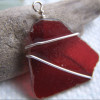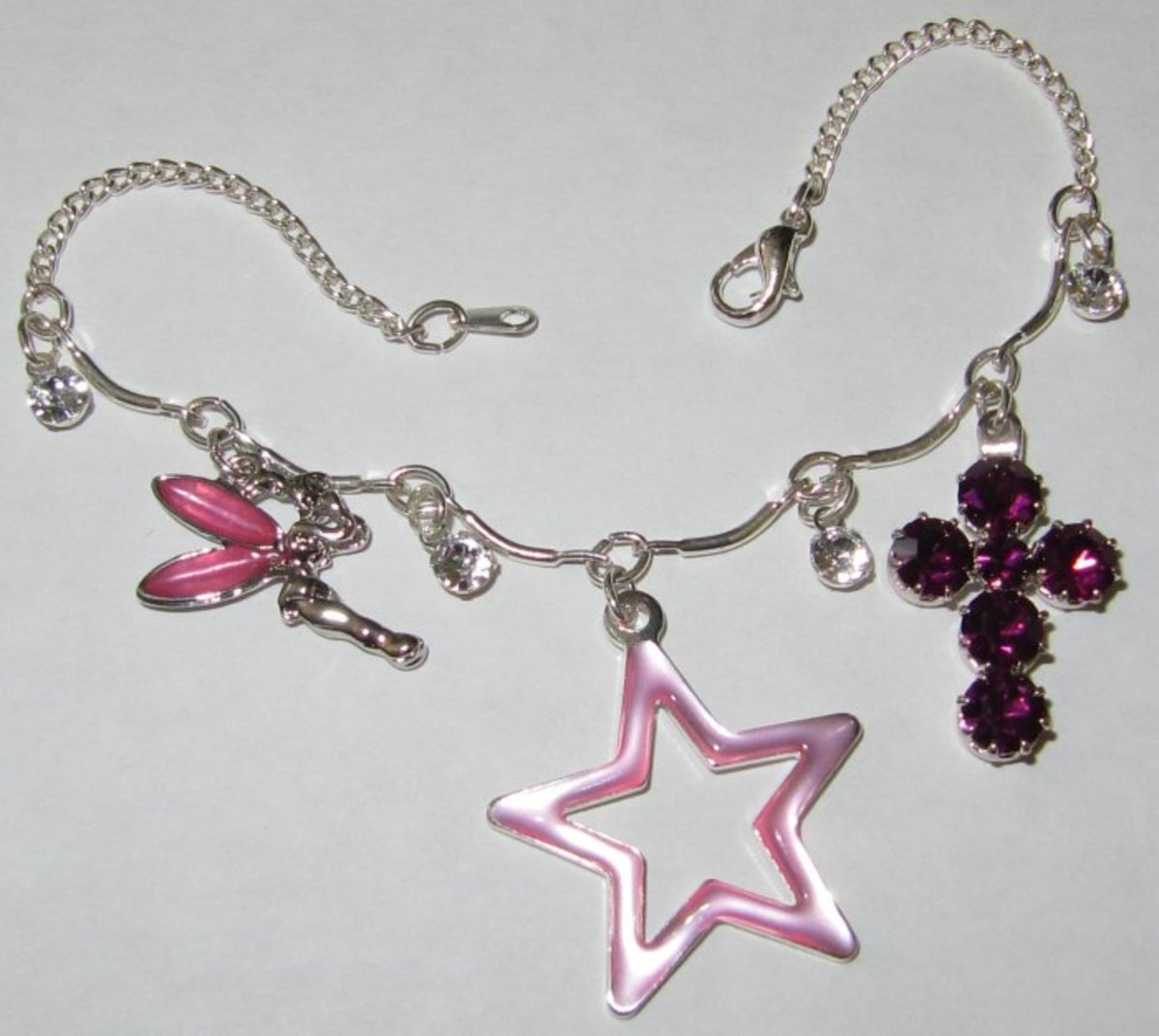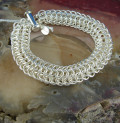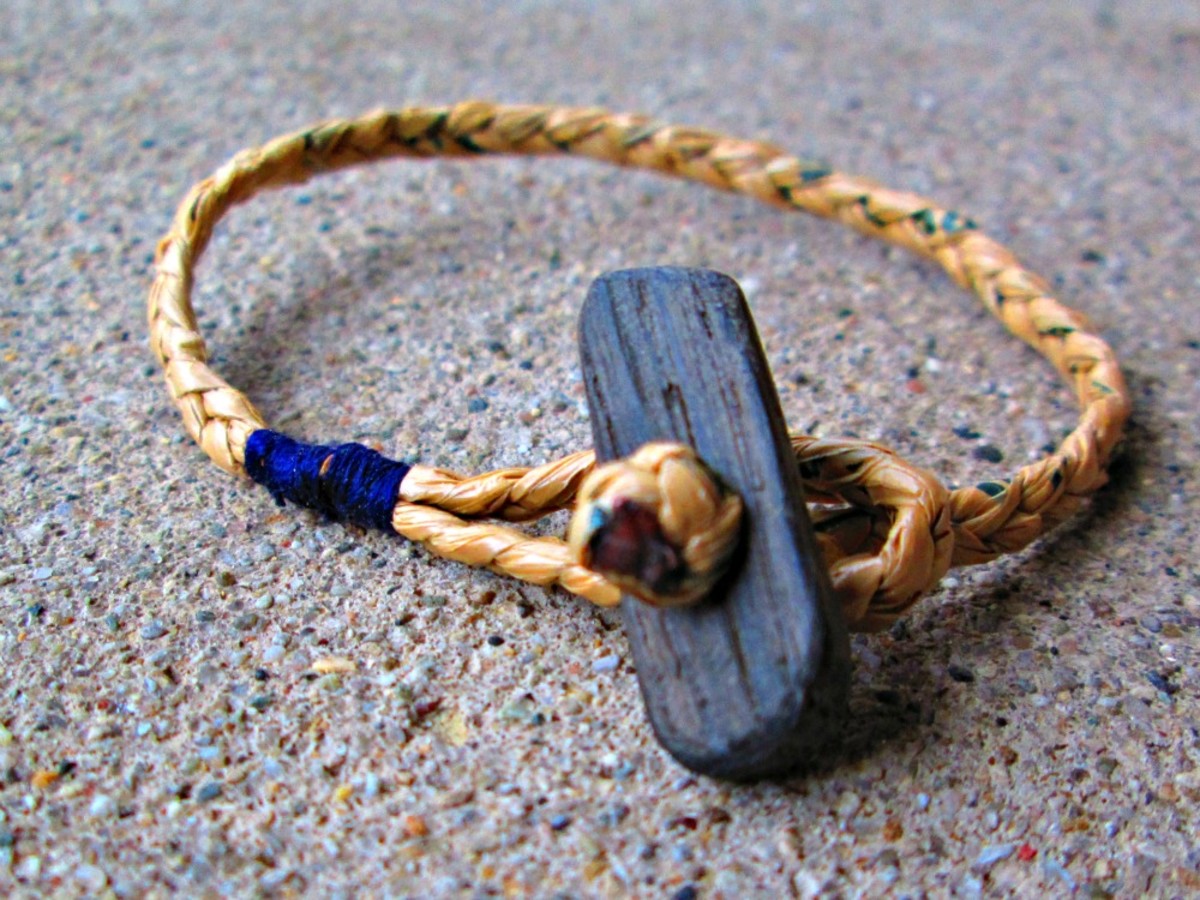Using a Tumbler for Jewellery
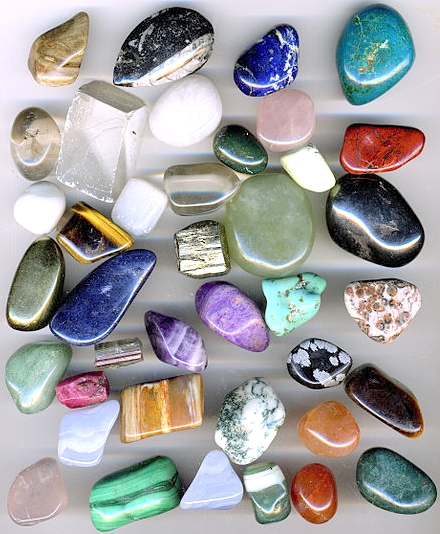
If you are making jewellery that uses metals such as sterling silver, precious metal clay (PMC) copper or bronze, then you'll realise that to get that high shine professional look requires a LOT of polishing. If you are polishing by hand, then it can take you longer to do the polishing than it took to make your piece. Jewellers use a polishing machine to polish sterling silver, copper and all metals, but that's not it's only use!
Those working with PMC quite often have smaller jewellery pieces with a lot of intricate textures that need polishing - making a tumbler practically essential.
For this reason, if you're making your own jewellery you will will quickly add a Tumbler onto your Wish List so you can simply put your finished pieces into the tumbler, turn it on, then walk away while it brings up the full shine of your piece while you get on with something else.
Highly polished jewellery has the professional finish and look that you need to make your jewellery attractive to buyers - it is the difference between a sale, or not.
Work Hardening
When you're making jewellery using sterling silver, copper or bronze, you'll have started by softening the metal so you can twist, turn, texture or form it - this is an essential stage. But, having finished what you are making, it then needs to be hardened so it sets in shape and doesn't just bend out of shape the minute somebody touches it. The metal will, to some extent, have work hardened as you manipulate it - but it will still need to be hardened to use or sell it.
Tumblers are used for work hardening too.
The main benefit of using a tumbler is that it will save you time and effort compared to polishing by hand. A tumbler also polishes evenly into all the corners, nooks and crannies that are difficult to reach by hand.
If you are making jewellery then it's likely you are making more than one piece at a time - and a tumbler means you can put a hand full of your work in together to be polished together. A tumbler saves you HOURS time - and if you're timing yourself and selling your jewellery, then every minute counts!
How Much Does it Cost to Run a Tumbler?
Running a tumbler is cheap, it's probably costs just a penny a day to run - so there's no worries about the cost.
Once you've bought a tumbler, it's likely that you won't have to ever buy another one again. They are simple machines that last for years. Make sure you wash out and clean your barrels and dry your shot when it's not being used. The liquid in the barrel collects all the muck from each batch you are cleaning, so it can get quite grubby.
How Much Shot to Buy
A 2lb bag of shot is probably all you'll need. A 1lb bag of shot is the minimum to buy.
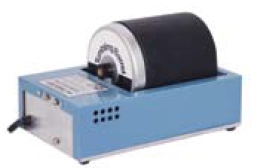
Is a Tumbler Easy to Use?
It couldn't be any easier. To use a tumbler you just need:
- A tumbler, with a barrel
- Shot (small stainless steel balls, little pins, rods and shapes)
- Water
- Barrelling compound, or washing up liquid*. Sometimes this is called gallay compound.
*Dawn dishwashing liquid is recommended in the US; the UK equivalent of Dawn is Fairy washing up liquid or Simple Green. The main criteria is to look for a degreasing dishwashing liquid that does not contain bleach, moisturisers or other additives.
Simply place the shot into the tumbler barrel, put your jewellery into the tumbler and add a level teaspoonful of barrelling compound (or washing up liquid), add just enough water to cover everything.
Put the lid on,to the barrel, making sure it's tight and doesn't leak, place the barrel onto the set of rollers on the machine and start the tumbler.
It works because as the barrel rotates the shot inside acts like thousands of little hammers, planishing the surface of the metal and making it shine. And all without any effort on your part.
Rubber Barrels or Plastic Barrels?
What the tumbler barrel is made of isn't so important in itself - you will still get the same results. The main difference between the two is the noise level. Metal, being turned in a barrel, will create a constant noise.
A rubber barrel is quieter than a plastic barrel.
Plastic barrels can be more prine to leakage and many people find that removing the lid is harder with the plastic barrels as they are made slightly differently.
The end results you get from both is the same though - so you'd choose a rubber barrel over a plastic barrel if you're worried about noise, leaks or struggling with the lid.
Do You Need Spare Barrels for a Tumbler?
If you're just using the tumbler for yourself, to polish your jewellery you've made, then one barrel can be enough.
Some people have two barrels, e.g. if you were teaching a class you might like to have a barrel for your work and one for your class - the main reason for this is that if you're in the middle of hardening or polishing a batch then you don't have to empty it out because it's needed for your class before you've finished.
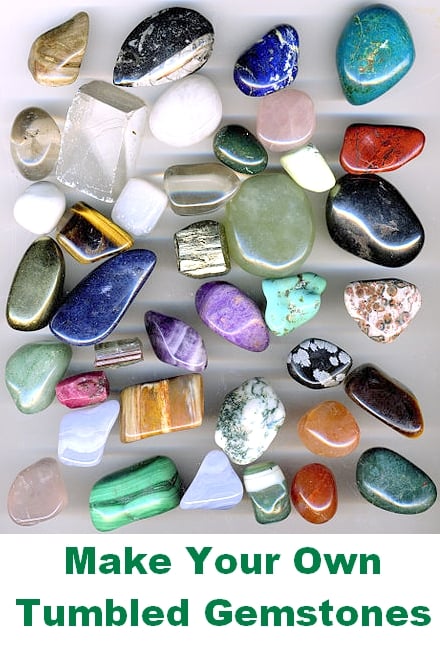
Making Your Own Gemstones
If you are using your tumbler to polish your own semi-precious stones, then you will need a completely separate barrel for this as rock tumbling and sterling silver/copper/bronze polishing should be kept separate. The rock tumbling can leave bits of grit in the tumbler that you don't notice, until they scratch your newly made silver!
- When you are tumbling rocks into gemstones, you use grit.
- When you are tumbling metals, you use stainless steel shot.
Which Size of Tumbler Barrels Is Best?
This will depend what you are trying to do with your tumbler. Most people will find the smallest barrels are more than good enough. You can fit a LOT of jewellery inside a standard tumbler barrel.
Larger tumbler barrels tend to be used by people who are tumbling their own gemstones. The stones require more space to tumble around efficiently.
The largest barrels would only be used by somebody who is making a LOT of jewellery, or quite a lot of large pieces.
Most jewellers will use a Lortone 3A tumbler, with a 3lb barrel and using 1lb of shot.
More on Polishing and Cleaning...:
- Cleaning and Polishing Jewellery
Cleaning and polishing jewellery is a very important part of making handmade pieces - find how to polish and finish off your jewellery so it is of high, merchantable quality, and make more sales.
How Long Does a Tumbler Take to Polish and Work Harden Metal?
Depending on the size of what you've been making, 1-3 hours is plenty. If you're making small pieces, any amount of tumbling can help, so if you've only got half an hour then it's surprising just how shiny things come out. You'll get to know how long your tumbler takes to shine and harden the type of jewellery you've made.
This is where you can see the time savings - if it takes a machine 1-3 hours to really harden and polish your jewellery, imagine how long it'd take you by hand to produce the same result!
You can polish all your work mixed up together - you don't tumble things individually, you can save it all up and do one batch in the tumbler if you wish.
A Tumbler Polishes, It Doesn't Remove Scratches
A tumbler will remove small scratches from your work - but if you've got a big scratch on it then this needs to be removed by hand before you put it into the tumbler. A tumbler polishes the surface - large/noticeable scratches will need individual attention before tumbling. Of course, it should be rare that you've scratched your jewellery while you are making it....
Using a Tumbler with Pearls and Stones
The easiest piece of advice to give you is: never do this! Pearls and stones can, and will, get damaged while in the tumbler.
Having said that, there are some stones which would be OK, but you need to test them for yourself. Test a single stone or bead in a tumbler before you spend your time using it in a design.
Here is how some stones behave:
- Amber doesn't like to be soaked in water.
- Turquoise and malachite are soft stones and can lose their shine and become dull.
- Opals are brittle and can shatter.
- Pearls can be scratched and damaged
- Emeralds can leak a nasty oily resin, making a mess of everything else in the tumbler and being ruined.
- Coral will lose its shine.
- Coated Swarovski crystals - the coating will become dull
What Is OK In a Tumbler?
Having said not to tumble things, there are some that will probably work out fine without any testing:
- Swarovski crystals (uncoated) - these are usually fine to tumble. The only time you would have a problem would be if the crystal already had a flaw in it, so it could have broken at any time anyway. Some Swarovski crystals have coatings on them - you shouldn't tumble those as the coating can lose its shine.
- Glass beads, including lampwork beads - these are OK to tumble. Again, if there are any flaws in the beads they might break, but this is rare.
Lortone 3A Tumbler: Single Barrel

Lortone 33B Tumbler: Two Barrels
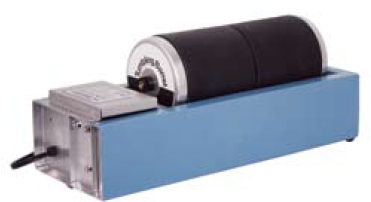
Which Tumbler Do Most People Use?
Most people use one of the Lortone tumblers, which have proven themselves to be a perfect tumbler for jewellery makers as they are reliable and do the job perfectly.
Lortone 3A Tumbler
Perfect for polishing, shining and work hardening your jewellery. This tumbler has a single barrel.
Lortone 33B Tumbler
This is something that you might consider if you are tumbling your own gemstones and needing a tumbler for jewellery. It takes two tumblers but is equally happy with just one barrel in use. It's perfect, therefore, if you're tumbling stones for a long time, yet need to quickly polish up some jewellery you are working on. You simply lift the barrels of as they're not "fitted down".
The barrels in both these tumblers are interchangeable.
NOTE: You will need to buy shot - most tumblers are supplied with grit; grit is used to tumble rocks. To tumble jewellery and metal you will need shot.
Making and Selling Your Own Stones
Some jewellers will sell loose gemstones alongside their jewellery, or are selling beads they have bought wholesale.
If you want your tumbler to pay for itself, consider getting a larger tumbler if you are expecting to sell large quantities, or the Lortone 33B so you can always have a barrel on the go tumbling stones.
Making and Selling Your Own Stones
Some jewellers will sell loose semi-precious alongside their jewellery, or are selling beads they have bought wholesale.
If you want your tumbler to pay for itself, consider getting a larger tumbler if you are expecting to sell large quantities, or the Lortone 33B so you can always have a barrel on the go tumbling stones.
A simple basket of shiny stones on your craft stall will bring buyers to your booth!
Which Shot Do You Use in a Tumbler?
Shot comes in a variety of shapes, most commonly pins, saturns, angled cylinders and sphere.
The shot should be stainless steel - and of different shapes. Shot needs to be in different shapes so that it can work into all the little corners and folds in your jewellery, to polish right into those nooks and crannies.
If you use shot of the same shape then you might find that some bits of your work don't get polished, which can be annoying.
Many people don't bother getting the pin-shaped shot, so if you want a range of shapes this shape could be omitted if you choose. Pins are the shot most likely to get caught up in holow pieces of jewellery and in chains. Pins are used by people that have quite deep (rather than flat) jewellery to polish as they can reach inside these pieces, it's often used by people who are working with Bali silver, for example.
One bag of shot will probably last you years - so get a mixed bag of shot. If you don't want to use pins, either select mixed shot that doesn't contain pins, or pick them out and keep them in case you need them in the future.
Do Chains Get Tangled? Does Shot Get Stuck in Jewellery?
If you are making intricate pieces, then you might find that some shapes of shot get tangled up inside them - this is something you will have to deal with if it occurs - quite often just jiggling it about and dropping it onto a magazine will loosen it.
Fine chains will tangle and earring wires will tangle with chains - so you do need to keep an eye on the mix of jewellery you are putting into your tumbler and be prepared to untangle them. You can untangle fine chains using a good eye-glass and a couple of sewing pins.
Storing Shot
Between uses, you should either leave the shot fully immersed in your cleaning solution or, if you're not using your tumbler very often, take it out, rinse it through and dry it thoroughly.
I tend to tip the contents of the barrel into a sieve, then rinse it under the tap. I then lay out some paper towels, or J-cloths, onto a tray and spread the shot across the tray and leave it out to dry thoroughly.
As a general rule, shot doesn't get rusty, but don't leave it lying about exposed and wet.
